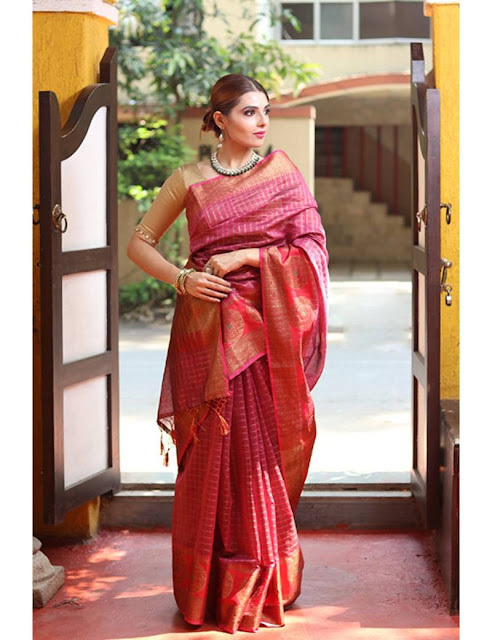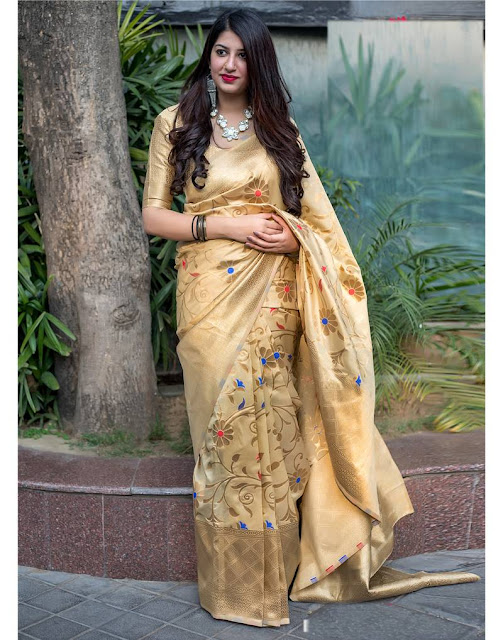Hand Woven Sarees – Simplicity Is the Ultimate Sophistication
Saree and Indian women are synonymous; the word saree is derived from the Sanskrit word “Sadi” meaning a strip of cloth. Sculptures of women in the caves of Ajanta and Ellora are draped in saree like garments. Saree dated back to Mahabharata where Draupadi was insulted in front of the whole court, and Lord Krishna saved Draupadi chastity. Even today it has a special place in Indian women`s heart and an integral part of her wardrobe. Saree poetically expresses both sensuality and modesty which no other dress could do. This 9yard of grace beautified Indian women from time immemorial. Different types of hand woven sarees are gaining popularity worldwide due to their elaborate designs, exciting colors, sheer texture, and elegant style. Find below Different Hand woven sarees-
Bandhani Sarees:
Different types of hand woven sarees like the Bandhani Sarees, originates from Gujarat. Dying of this saree needs great skill and creativity as the fabric is tied with the thread at several points. Motifs like Chandrakala, Shikari etc. are, printed depending on how the cloth is tied. Mainly organic dyes are used on these sarees predominant colours are yellow, green, blue, red and black. The art of dyeing Bandhani saree is unique; the fabric is tied very tightly with the thread at different points then dyed. These tight knots allow those parts to be untouched by dyeing and retain its original colour. Bandhani sarees come in different colours, designs and pattern depending from which region it source.
Jamdani Saree:
Jamdani word derives from two Persian words “jam” means flower and “dani” means vase. Jamdani sarees originated from Dhaka. It is one of the finest hand-woven silk saree of Bengal. They are light in weight and with a fine pattern woven all over its body giving it a splendid and lush finish. Jamdani sarees can be woven in cotton, silk or combination of both giving it a soft and agile feel which drapes perfectly on your body. Jamdani sarees are sophisticated and elegant.
Kanjeevaram silk sarees:
Kanjeevaram silk sarees are the glamorous essence of south Indian culture. The rich quality of fibre amazing finish gives it an exquisite appeal. South Indian silk and zari from Gujarat forms the integral part of the saree. Contrast border from the body of the saree gives it a stunning look. Kanjeevaram silk is the south Indian version of Banarasi silk. Vibrant colours with a hint of golden hue make it perfect for festive seasons. The designs printed on these sarees are inspired by scriptures and sculptures adorned on temples of this region.
Banarasi Saree:
Banarasi silk Sarees which are hand woven and originates from Varanasi in Uttar Pradesh. Initially crafted for royal families with real gold and silver threads makes it masterpiece and expensive. Its intricate art, the design makes it the most popular form of traditional saree. They are known for their gold, silver or zari embroidery. Banarasi Silk Sarees are famous for its ethnicity and sheer gorgeousness. They are admired for their intricate brocade work, fine texture, and delicacy. The art and culture are very ancient even mentioned in Mahabharata and ancient Buddhist scriptures. Due to its intricate design, vibrant colour and fine texture it is a favourite wedding saree. The modern design of this saree is a combination of Persian and Indian culture. These sarees are perfect for grand weddings and other festivals.
Konrad Saree:
Konrad saree originated from Tamil Nadu and known for their rich tradition and outstanding fabric. Borders of these sarees are 10to 14 cm wide with intricate designs. Motifs like an elephant, peacock, and double-headed eagles are imprinted on the body of Konrad saree. Its exclusive design and weaving technique makes it one of the sought of traditional saree.






Comments
Post a Comment